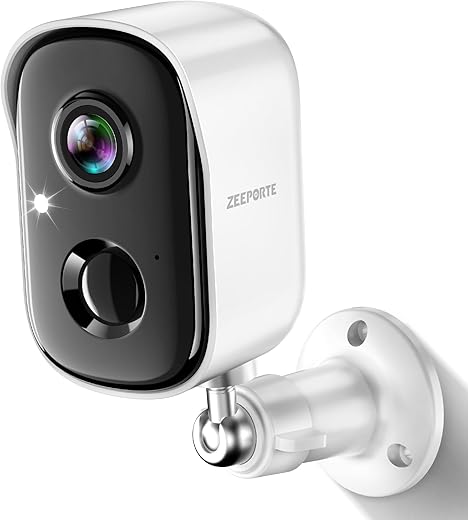Google Nest Thermostats: Which Wins?
When it comes to smart home technology, the Google Nest Thermostat stands out as a popular choice for homeowners looking to enhance their energy efficiency and comfort. In this comparison, we’ll explore the key features, functionalities, and differences that distinguish the various models of the Google Nest Thermostat. By understanding these aspects, you can make an informed decision about which option best suits your needs and lifestyle.
Smart Living

The Google Nest Thermostat is an ENERGY STAR certified, programmable smart thermostat that helps you save energy and maintain comfort by adjusting automatically when you leave home. Easily control it from anywhere using the Google Home app, and enjoy features like HVAC monitoring and personalized energy-saving suggestions.
Smart Home

The Google Nest Learning Thermostat (4th Gen) is an energy-efficient smart thermostat that adapts to your preferences, helping you save an average of 12% on heating and 15% on cooling bills. With its elegant design, easy installation, and compatibility with Alexa and Google Home, you can effortlessly control your home’s temperature from anywhere.
Google Nest Thermostat
Power Source
Battery Powered
Material
Plastic
Control Type
Remote Control, Voice Control
Included Components
Mounting screws, Steel plate, Nest Thermostat, Documentation bundle
Temperature Control Type
Heating, Cooling
Google Nest Thermostat
Power Source
Corded Electric
Material
Aluminum
Control Type
Button Control, App
Included Components
Thermostat Display, Thermostat base, Trim plate, Steel plate, Mounting screws and wiring labels, Nest Temperature Sensor (2nd gen)
Temperature Control Type
Heating, Cooling
Google Nest Thermostat
Google Nest Thermostat
Google Nest Thermostat
Google Nest Thermostat
Comparison


Unique Selling Points (USPs)
Google Nest Thermostat
- Affordable Option: Great for budget-conscious users looking for a smart thermostat.
- Sleek Design: Modern charcoal finish that fits seamlessly into any decor.
- User-Friendly: Simple setup and easy-to-use mobile app.
- Energy-Saving Schedule: Users can manually program schedules to save energy.
Google Nest Learning Thermostat (4th Gen)
- Adaptive Learning: Automatically learns your schedule and preferences for maximum efficiency.
- Temperature Sensor Included: Provides better control of temperature in different rooms.
- Advanced Energy Saving: Utilizes the Adaptive Eco feature to optimize savings without compromising comfort.
- Broader Smart Integration: Compatible with both Google Home and Alexa for versatile smart home setups.
Pros and Cons
Google Nest Thermostat
Pros:
- Affordable price point.
- Easy installation and user-friendly interface.
- Good energy-saving capabilities with manual scheduling.
Cons:
- Lacks the advanced learning features of the Learning Thermostat.
- No external temperature sensor option.
Google Nest Learning Thermostat (4th Gen)
Pros:
- Learns user preferences for automated comfort.
- Includes a temperature sensor for improved temperature control.
- Energy-efficient features that adapt to user behavior.
Cons:
- Higher price point may not be suitable for all budgets.
- Slightly more complex setup due to advanced features.
Use Cases
- Google Nest Thermostat: Ideal for users looking for a budget-friendly, straightforward smart thermostat that covers basic needs without extra bells and whistles.
- Google Nest Learning Thermostat (4th Gen): Perfect for tech-savvy users who want an intelligent system that learns and adapts to their lifestyle, providing maximum efficiency and comfort.
Conclusive Assessment
While both products have their strengths, the Google Nest Learning Thermostat (4th Gen) emerges as the clear winner for those seeking advanced features and energy efficiency through learning capabilities. However, for users who prioritize affordability and straightforward functionality, the Google Nest Thermostat is a commendable choice.
Final Summary
In summary, if you’re looking for a smart thermostat that learns and adapts to your living patterns while offering a polished design, the Google Nest Learning Thermostat (4th Gen) is the way to go. On the other hand, if budget is a primary concern and you need a user-friendly device without the frills, the Google Nest Thermostat will meet your needs just fine. Choose based on your specific preferences and requirements!


Guidelines for Comparing Nest Smart Thermostats
When it comes to choosing a smart thermostat, particularly within the Google Nest product line, there are several key factors to consider. This guide outlines general guidelines and critical details to help you make an informed decision.
Key Features to Compare
When comparing different models of Google Nest Thermostats, it’s essential to look at the following key features:
- Compatibility:
- Ensure the thermostat is compatible with your existing HVAC system.
- Check for support of features like multi-stage heating/cooling or heat pumps.
- Energy Efficiency:
- Review the energy-saving capabilities.
- Look for Energy Star certification to gauge efficiency.
- Smart Features:
- Evaluate the integration with smart home ecosystems (Google Assistant, Amazon Alexa).
- Check for additional features like remote access, learning capabilities, and scheduling.
- User Interface:
- Consider ease of use and design of the display.
- Look for intuitive controls and mobile app functionality.
Installation Process
The installation process can vary between models. Here are some considerations:
- DIY vs Professional Installation:
- Determine if the thermostat supports easy DIY installation.
- Some models may require professional installation, which can add to the cost.
- Guided Setup:
- Check if there are step-by-step installation guides or video tutorials available.
- Look for models that offer customer support during installation.
Price Comparison
Price is always a significant factor. Here’s how to approach it:
- Initial Costs:
- Compare the retail prices of different models.
- Account for any additional costs for installation or accessories (like trim kits).
- Long-term Savings:
- Evaluate potential energy savings over time.
- Research any available rebates or incentives for smart thermostat installation.
Customer Reviews and Ratings
Understanding user experiences can provide valuable insights. Consider the following:
- User Feedback:
- Read customer reviews on trusted retailer websites.
- Look for common themes in the comments (positive and negative).
- Expert Reviews:
- Refer to tech review websites for professional opinions.
- Check for ratings that highlight performance, reliability, and ease of use.
Aesthetics and Design
The look of your thermostat matters, especially if it’s in a prominent place in your home:
- Color and Finish:
- Evaluate the available color options and materials.
- Ensure it matches your home decor.
- Size and Display:
- Consider the size of the thermostat and the clarity of the display.
- Look for customizable display options (like digital or analog).
Quick Guide to Installing Your Nest Smart Thermostat
Sure! Here are the key differences between the two Google Nest Thermostat models:
- Design and Build:
- The Google Nest Thermostat has a more minimalist design and comes in a charcoal color option. It features a touch-sensitive display but lacks the rotating dial found on the Learning Thermostat.
- The Google Nest Learning Thermostat (4th Gen) has a polished silver finish and a more premium look with a sleek rotating metal ring. It also features a more advanced display with a larger screen for easier reading.
- Learning Capability:
- The Google Nest Thermostat is programmable but does not have the advanced learning capabilities. You can set schedules, but it does not learn your habits automatically.
- The Google Nest Learning Thermostat automatically learns your temperature preferences over time and can adjust itself accordingly. It can create a personalized schedule based on your habits.
- Temperature Sensors:
- The Google Nest Thermostat does not come with temperature sensors out of the box, although it can be paired with external sensors for additional monitoring.
- The Google Nest Learning Thermostat can work with Nest Temperature Sensors, which you can place in different rooms for more accurate temperature control.
- Energy Saving Features:
- Both models offer energy-saving features, but the Learning Thermostat is equipped with Adaptive Eco, which helps optimize energy usage based on your habits and preferences.
- The basic Google Nest Thermostat allows you to set eco temperatures but does not feature the adaptive learning functions.
- Compatibility:
- Both thermostats are compatible with smart home systems, including Google Home and Alexa. However, the Learning Thermostat tends to have broader compatibility with different HVAC systems.
- Price:
- Typically, the Google Nest Learning Thermostat is priced higher than the standard Google Nest Thermostat due to its advanced features and capabilities.
By understanding these differences, you can choose the thermostat that best fits your needs and lifestyle!
news via inbox
Stay updated with the latest tips and offers. Subscribe to our newsletter today!














Honestly, I think both of them are awesome, but I prefer the Google Nest Thermostat because of its eco mode. It really helps save on energy bills!
Great question! Both have similar features, but if you want something more budget-friendly, the standard Google Nest Thermostat might be ideal for a small space. It’s user-friendly too!
I’ve got the Google Nest Thermostat in my home, and it’s been such a game-changer! I set it to adjust automatically when I’m not home, and I’ve seen my energy bill drop significantly!
That’s awesome to hear! The automatic adjustment really does help a lot with energy savings.